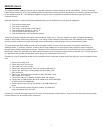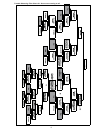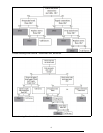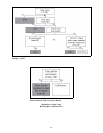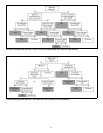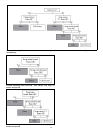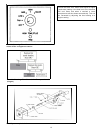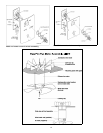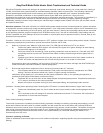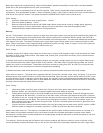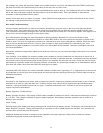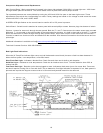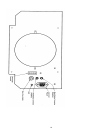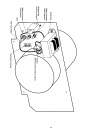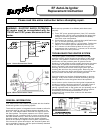1 5
EasyFire B Model Pellet Heater Quick Troubleshoot and Technical Guide
SPI’s EasyFire pellet heaters are designed to operate as a seasonal zone heater burning 1/4" wood pellet fuel. Utilizing a
12VDC control and drive system allows for extended battery operation when AC power fails. The following outlines the
general operating parameters and trouble shooting encountered during installation and seasonal operation. Basic
operation is controlled combustion of wood pellets metered by the feed drive system into a burn pot and a
combustion/convection fan motor providing separate air for combustion and heat exchange. This process is controlled by a
digital main controller which monitors all function through two sensors and incoming outgoing operating voltages.
Additionally, starting functions are provided by an industrial style cartridge heater located in the burn pot and both internal
and optional thermostat.
Standard operation: With both 120VAC and 12VDC battery power attached and a functional pellet flue system the heater
is designed to operate continuously during the heating season. On a daily bases the heater requires fuel to be added to the
storage hopper and depending on the fuel quality, burn pot area cleaned. Starting and operating sequences are controlled
by an operating software program contained on a EPROM memory chip. Fuel rate is controlled by mode setting and trim
position (standard trim knob setting is 9:00 and is located on control panel next to operation buttons). Normal start up and
operation summary follows:
Condition - Heater is cold, power connected, button to “OFF” position. Hopper door closed (safety switch closed). External
thermostat jumped (factory standard) or optional thermostat closed to call for heat.
1) Select a run button (Low, Medium, High) and press. The LED light will shift from OFF to run button.
A) Feed motor starts initial fuel shot (approx. 40 seconds) and ignitor ON. Ignitor will begin to start heating
and pass 300 degrees in 30 seconds.
B) Fan motor starts in 60 seconds @ 3 volts providing combustion and convection air. Feed will cycle OFF
completing the start up fuel shot. Smoke will be visible normally visible through the door glass with in 2
minutes.
C) Feed will cycle ON for short periods during the start cycle add small amounts of fuel. Heater continue in
START UP mode until temperature rise is confirmed by sensors or for a total of 10 minutes.
If temperature does not increase by 15C during this STARTUP phase the heater will begin the SHUTDOWN (for
further information read SHUTDOWN in several paragraphs).
2) RUN mode begins when temperature rise is achieved (normally within 5-7 minutes).
A) Fan increases based on run button selected. Feed pulses increase based on temperature and TRIM
setting. Feed trim adjustment allows for a lower or higher average fuel delivery.
Initial flame is high based on a cool heater and fuel shots provided for start up. As operating temperature is
reached the feed pulse will decrease and flame will drop.
B) Feed rate will vary up and down as the heater adjusts for operating temperature. Temperature measured
at T-2 sensor mounted on fan housing manifold.
C) Heater will continue to operate as long as fuel, thermostat setting, and operating button remains.
Condition - Shutting down operating heater. Selecting the OFF button or external thermostat no longer calls for heat.
A) Feed motor immediately stops. No fuel is added to the burn pot and the coals remaining began the burn
out.
B) Fan is reduced to shut off voltage of 5 volts and maintained until sensor T-2 records a 20C reduction of
temperature or 20 minutes time elapses.
Other related operating parameters
Three basic functions are constantly monitored during operation including flue drafting, operating temperatures, and AC
power input. Blocked flue will cause an unsafe condition and will cause the unit to shut down with a steady RED fault
indication noted on the control panel. Continued high temperature may cause a unsafe condition. The heater will stop the
feed during high temperatures to allow the heater to cool. A flashing RED will indicate high operating temperature. AC
power outage will stop external thermostat function if the optional battery is connected allowing the heater to run
continuously while AC is out.
Common operating problems:
(Refer to installation manual and repair manual for additional information regarding specific component replacement and
testing).



